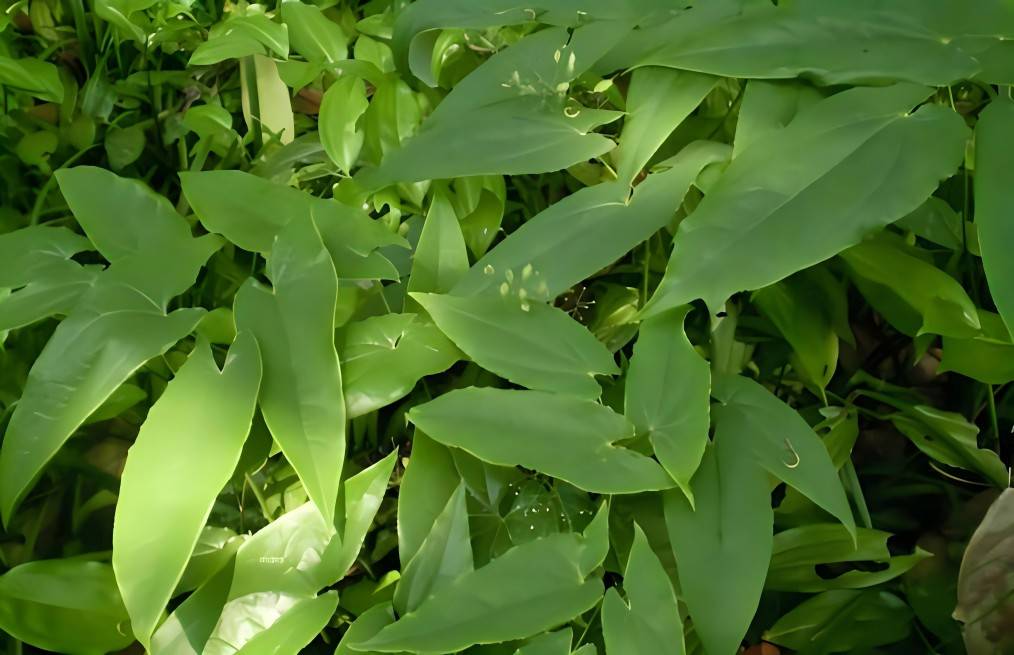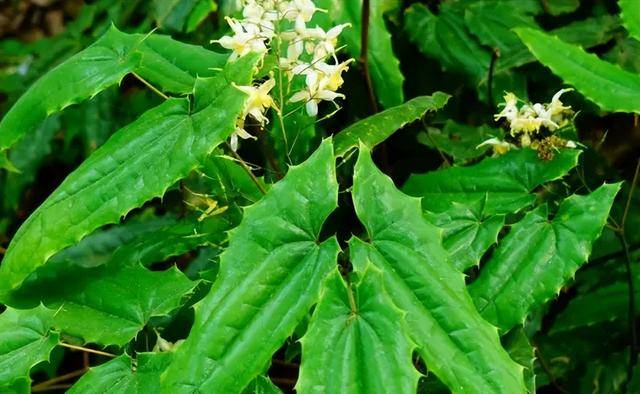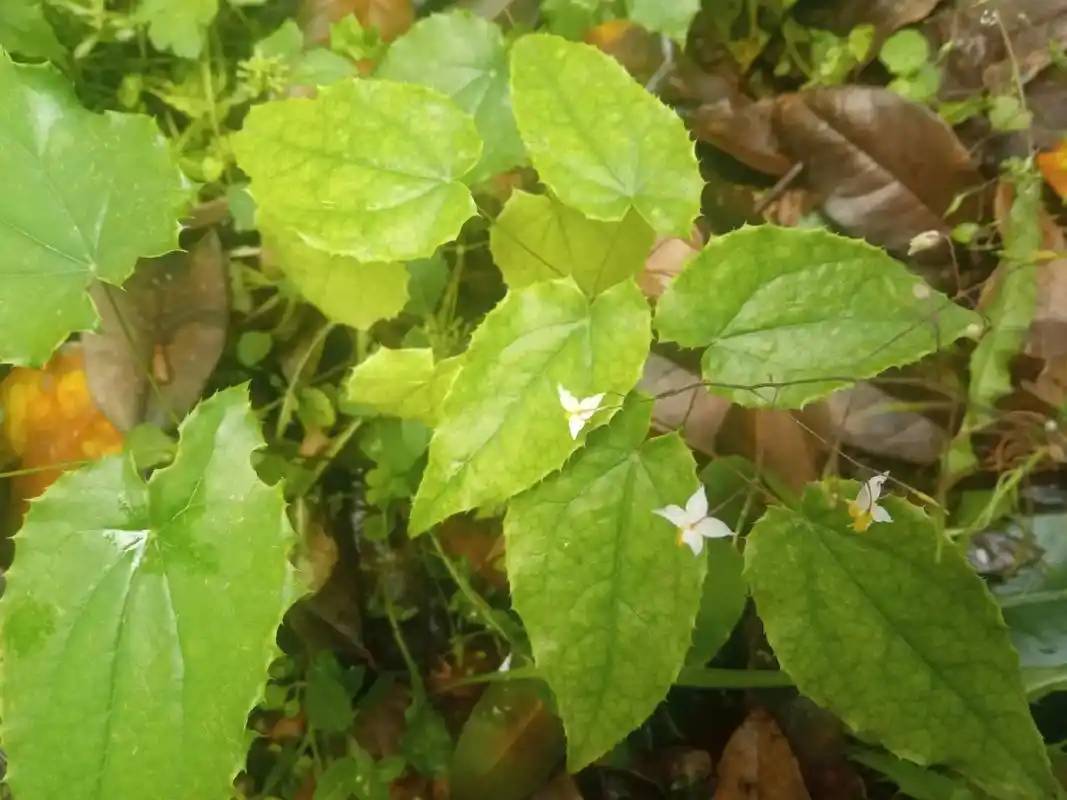What Is Epimedium Grandiflorum?
There are about 55 species of Epimedium L. plants worldwide [1], and 45 species are native to China [2]. According to the size relationship between the petals and the inner sepals, Epimedium plants are divided into two groups: the large-flowered group and the small-flowered group. Guizhou is an important area and distribution center for the occurrence and evolution of the small-flowered group of Epimedium plants. In particular, the northeast of Guizhou Province has the largest number of primitive species preserved [3].
Many species of Epimedium have important medicinal properties and are well-known traditional Chinese medicinal herbs. They are also the most commonly used important Miao medicines in Guizhou[4]. Among them, Epimedium brevicornum Maxim., Epimedium sagittatum (Siebold & Zuccarini) Maximowicz., Epimedium pubescens Maxim.], Korean Epimedium (Epimedium korea- num Nakai.) and Wushan Epimedium (Epimedium wushanense Ying.) have been included in the Chinese Pharmacopoeia [5]. They have the effects of tonifying the kidney yang, strengthening the muscles and bones, and dispelling rheumatism [6]. They are used to treat impotence and spermatorrhea, weak muscles and bones, rheumatic pain, numbness cramps, menopausal hypertension and coronary heart disease [7-9]. It has attracted widespread attention at home and abroad, leading to a sharp increase in market demand for Epimedium extract.
Due to over-harvesting and habitat degradation, the wild resources of Epimedium have been extensively damaged in recent years, and the resources are in an endangered trend. However, most of the research on Epimedium in Guizhou has focused on resource protection and development and utilization, and there is a lack of systematic analysis of the current status of Epimedium resources in Guizhou and the factors affecting their quality. This paper organizes the resource distribution of Epimedium plants in Guizhou, analyzes the main active ingredients of Epimedium plants, focuses on the impact of factors such as light, temperature, soil and harvest time on the quality content of Epimedium plants, comprehensively analyzes the current breeding methods, planting density and management techniques of artificially cultivated Epimedium plants, and analyzes the problems and bottlenecks in related research, with a view to providing a reference basis for the protection, development and utilization of Epimedium plants resource protection, development and utilization, and cultivation demonstration to provide a reference basis.
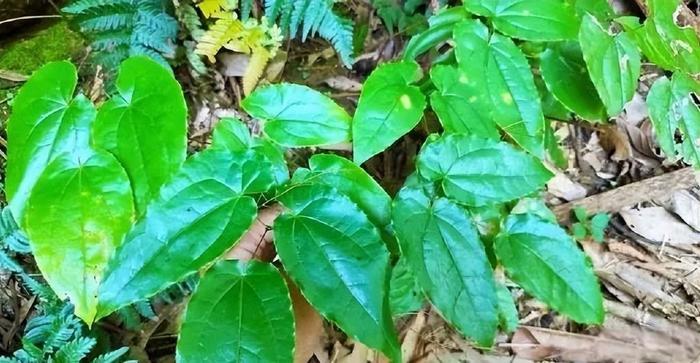
1. Overview of research on Epimedium species in Guizhou
1.1. Temporal changes in Epimedium species
The earliest record of Epimedium species in Guizhou dates back to 1886, when the French botanist Franchet discovered a new species, Epimedium acuminatum Franch., in Guiyang City [10]. In 1991, Tu Yulin [11] reported on the endemic plants of Guizhou for the first time, including a species endemic to Guizhou, Epimedium simplicifolium Ying. In 1993, He Shunzhi [12] discovered a new species, Epimedium bo-realiguizhouense S. Z. He & Y. K. Yang., in Yanhe County, Tongren City. In 1994, He Shunzhi and Zhang Tianlun [13] discovered a new species, Epimedium parvifolium S. Z. He et T. L. Zhang., in Songtao County, Tongren City.
In 1996, He Shunzhi and Guo Baolin [14] discovered a new species, Epimedium shuichen-gense S. Z. He, in Shuicheng County, Liupanshui City. In 2001, the “Flora of China” (Volume 29) [15] included about 40 species of the Epimedium genus in the Berberidaceae family in China, of which 13 species and 1 variety were recorded as distributed in Guizhou. Ying Junsheng published a new species in the appendix, Epimedium multiflorum Ying., discovered in Yuping County, Tongren City. In 2003, He Shunzhi and Xu Wenfen [16] discovered a new species, Epimedium dewuense S. Z. He, Probst & W. F. Xu., in Dejiang County, Tongren City. In the same year, they reported Epimedium sagittatum (Siebold & Zuc- carini) Maximowicz var. guizhouense S. Z. He & B. L. Guo.], Jianhe epimedium (Epimedium myrianthum Stea- rn var. Jianheense S. Z. He & B. L. Guo.) and other two varieties were reported in the same year [17]. In 2004, the “Guizhou Plant志” included 14 species of Epimedium in Guizhou [18].
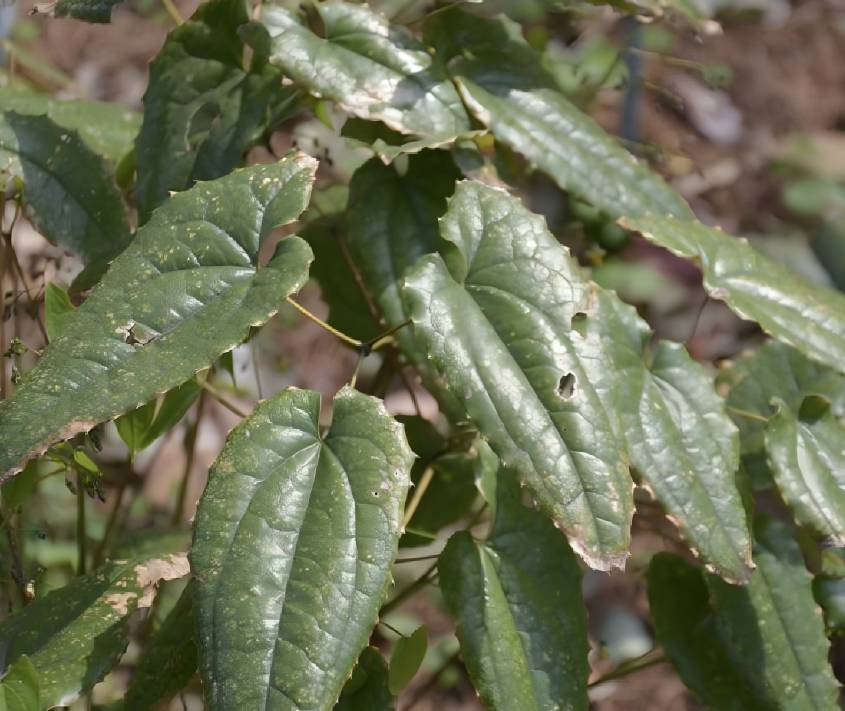
In 2007, Guo Baolin et al. [19] discovered a new species, Epimedium pseudowushanense B. L. Guo., in Leishan County, Qiandongnan Prefecture. In 2010, He et al. [20] discovered a new species, Epimedium pudingense S. Z. He, Y. Y. Wang & B. L. Guo., in Puding County, Anshun City. gense S. Z. He, Y. Y. Wang & B. L. Guo.), 2011. Flora of China (Vol. 19) includes 41 species of Epimedium, and records 14 species distributed in Guizhou [21]. According to relevant literature, there are 20 species and one variety of Epimedium plants officially reported in Guizhou, but due to continuous corrections in later periods, some species have been merged.
1.2 Species composition of Epimedium plants
The latest research data shows that there are 45 species of Epimedium plants in China, and there are currently 20 species of Epimedium plants in Guizhou, accounting for about 44% (see Table 1 for details). Among them, Epimedium koreanum, Epimedium brachy- rhizum Stearn., Epimedium debile, Epimedium podingense, Epimedium multiflorum, Epimedium jianheense, Epimedium microphyllum, Epimedium pseudowushanense, Epimedium kwangsiense, Epimedium shuichengense, Epimedium coactum H. R. Liang & W. M. Yan. and 10 other species and 2 varieties are endemic to Guizhou [10, 22], with an endemism rate of 60%. It is the province with the most endemics in the main distribution area of Epimedium plants in China. And Epimedium hirsutum, Epimedium tianpingshanense (Epimedium tianpingshanense Stearn.), Epimedium wushanense, Epimedium sagittatum, Epimedium qianlingense (Epimedium leptorrhizum Stearn.), Epimedium dolichostemon (Epimedium dolichostemon Stearn.), Epimedium muyupingense (Epimedium fran chetii Stearn., Epimedium baojingense Q. L. Chen et B. M. Yang. and other 8 species are also distributed in Guizhou, which shows that the species of Epimedium in Guizhou are very rich.
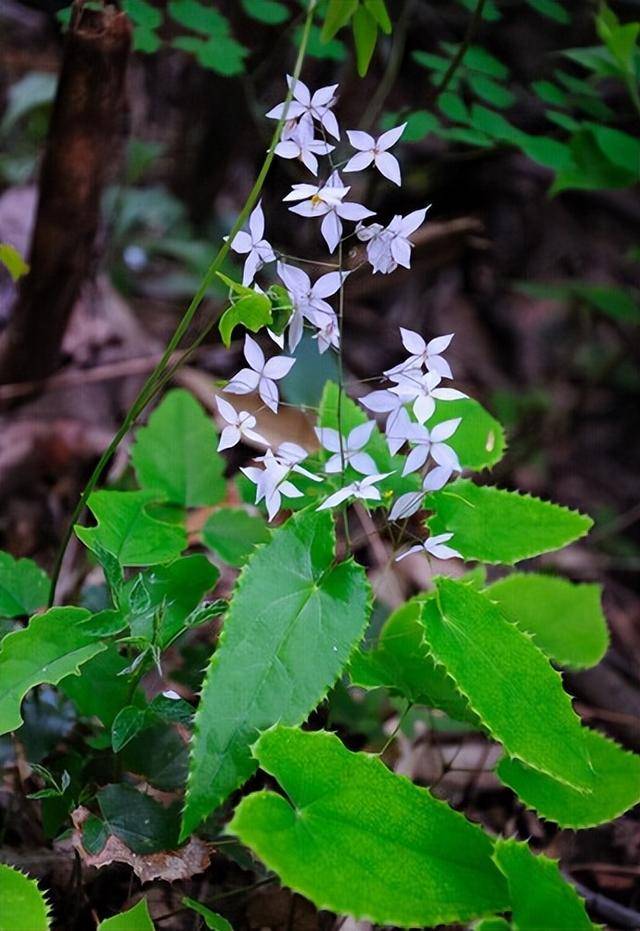
2 Main active ingredients of Epimedium extract
2. 1 Flavonoids
Flavonoids are the most active ingredients in Epimedium plants [29]. Among them, total flavonoids, icariin (ICA), epimedoside A, epimedoside B, and epimedoside C are the index components for quality control of Epimedium herbs in previous editions of the Chinese Pharmacopoeia [30-31]. Studies have found that Icariin can inhibit the oxidative stress caused by ischemia-reperfusion during AMI, reduce irreversible damage to cardiomyocytes, maintain the normal function of myocardial tissue, and has a variety of pharmacological activities on the immune, endocrine, cardiovascular and cerebrovascular systems, as well as bone and tumor tissue [32-33]. Shi Kuo-Hao et al. [29], Meng Xian-Li et al. [34] and Zhang Ling et al. [35] found that ICA and agastine A have strong antibacterial activity. Agastine A, B, C and ICA can all inhibit the proliferation and differentiation of cancer cells. With increasing concentration, agastine C and ICA exhibit stronger inhibitory effects. With the continuous application of new separation techniques in the isolation of natural medicines, new flavonoids such as baohuoside, jianhuoside, and epimedioside A have been analyzed, providing more support for the development and research of new drugs.
2. 2 Alkaloids
Up to now, a total of three alkaloids have been isolated from Epimedium plants: magnoflorine, icariin A, and the alkaloid epimediphine. These alkaloids have physiological activities such as antioxidant, sedative, immune-enhancing, and reproductive system protective effects [36]. Among the main medicinal varieties of Epimedium, Epimedium koreanum has the highest content of magnolol, and the leaves, stems, and underground rhizomes all contain magnolol, with the highest content in the underground rhizomes. Hairy Epimedium and Tianbingshan Epimedium are second, with a content generally above 0.07% [31]. Studies have found that epimedium alkaloids can enhance the energy metabolism level of sperm, improve the sperm quality, sperm density and sperm activity rate of injured mice, and improve the lesions of testicular tissue in injured mice [37-38]. Zhang et al. [39] confirmed that the alkaloid epimediphine has a strong acetylcholinesterase inhibitory effect.
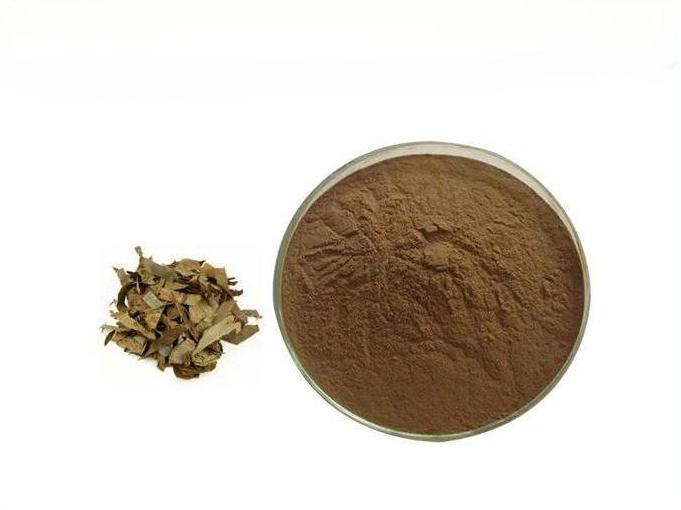
2. 3 Polysaccharides
Epimedium polysaccharide has certain antiviral properties, promotes the secretion of individual hormones, promotes nucleic acid and protein metabolism and platelet aggregation, stimulates cellular immune responses, activates thymus immune function, thereby enhancing the body's immune function and delaying aging [40]. Rao Jinhua et al. [41] analyzed that Epimedium polysaccharide (EPS) mainly contains three components: EPS-1, EPS-2 and EPS-3, which are mainly composed of galactose, mannose, arabinose, xylose, galacturonic acid and rhamnose. Li Long [42] found that the regulatory effects of Epimedium polysaccharides on the body include activation of T and B cells, activation of the reticuloendothelial system, activation of complement, activation of macrophages, induction of tumor necrosis factor, promotion of interferon production, and promotion of interleukin production.
3 Main factors affecting the quality of Epimedium plants
3. 1 Biological factors
3. 1. 1 Light
The effect of light on living things includes both the intensity and quality of light. The intensity of light affects the accumulation of secondary metabolites in plants. Excessively high or low light intensity will have a certain impact on the growth of Epimedium plants. Studies have found that when the light is controlled at 40% to 80% of natural light, the Epimedium plants grow well and have a high fruiting rate. When the light is about 20% of natural light, the growth of the plants is inhibited and the fruiting rate is low. When the light is 50% of natural light, the number of branches, the number of leaves, the number of rhizomes, the leaf area, the total flavonoid content of the leaves and total flavonol glycoside content, total flavonol glycoside production and leaf value are all at their maximum. Therefore, 50% shading can be used in production to increase the quality and yield of Epimedium plants and improve economic efficiency [43-45].
The quality of light under different light intensities also has a significant effect on the growth and development of Epimedium and the accumulation of active substances. For example, at a light intensity of (18.2 ± 2.5) μmol·m-2·s-1, blue light can significantly reduce leaf area, while yellow light can significantly increase the germination of new stems and branches, with a sustained promoting effect, and the highest biomass at 60 d. The content of icariin-type flavonoids under red, blue and yellow light is higher than that under white light, and yellow light was the highest. At an illumination intensity of (90.9 ± 2.5) μmol·m-2 ·s-1 , red light significantly reduced the leaf area; white light promoted the synthesis of icariin components more strongly than red, blue and yellow light. When the duration of the strong light treatment is increased, the other light treatments cause the content of icariin to degrade, while red light can greatly promote the synthesis of flavonoids. Therefore, in production, providing appropriate red and yellow light can increase the biomass of Epimedium plants and also increase the flavonoid content [46-47].
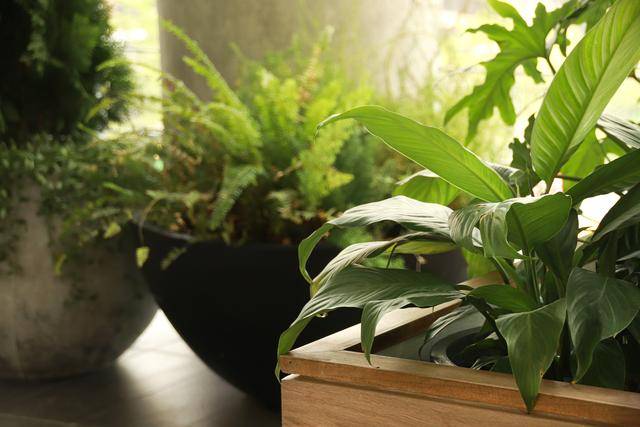
3. 1. 2 Temperature
Epimedium seeds have dormancy characteristics and are not easy to germinate. They need to be subjected to a temperature stratification treatment to break the dormancy state. For example, the seeds of Epimedium were subjected to a temperature-changing stratification treatment (20–25 °C for 1–90 d, 4 °C for 91–150 d). During the stratification process, the embryo morphology of Epimedium seeds gradually developed from a spherical embryo to a heart-shaped embryo, and finally to a cotyledon embryo, and the embryo rate increased significantly. The change in temperature was beneficial to the morphological development of the Epimedium seed embryo morphological development [48].
The effect of temperature on the growth and development of Epimedium is often the result of the combined action of multiple factors such as terrain, altitude and rainfall. For example, in June, the various flavonoids in Epimedium were negatively correlated with sunshine hours and humidity and positively correlated with ground temperature, indicating that after flowering, Epimedium grows best in warm, dry areas. In August, total flavonoids and icariin were positively correlated with temperature and negatively correlated with sunshine hours, indicating that during the period of chemical composition synthesis, moderate warming is beneficial to the synthesis of chemical components in Epimedium Epimedium sinicum chemical composition synthesis [49-50].
3. 1. 3 Soil
Soil is the place where plants absorb nutrients and water. The physical and chemical properties of soil and inorganic elements have an important effect on plant growth and development and medicinal ingredients. Hairy epimedium and arrow-leaved epimedium grow in soil with a pH of 5.5 to 6.0, indicating that epimedium grows well in slightly acidic soil [51]. However, the study found that icariin A is significantly positively correlated with soil pH. To increase the content of active substances in Epimedium, alkaline soil with a pH of 7.9 to 8.2 can be selected for artificial cultivation. A stepwise regression analysis found that the dominant soil factors affecting the total flavonoid content of Epimedium were total potassium and total nitrogen, and that total flavonoids increased with increasing soil total potassium content and decreased with increasing total nitrogen content.
The dominant soil factor affecting ICA content was available phosphorus, which increased with increasing soil available phosphorus content. The dominant soil factors affecting the contents of Icariin A and B were organic matter, which increased with increasing organic matter content increases. The dominant soil factors affecting the content of Icariin C are organic matter and soluble salt. The content of organic matter increases with the increase of soil organic matter content, while the content of soluble salt decreases with the increase of soil organic matter content [52]. Qian Yifan et al. [53] used a three-factor five-level orthogonal test of urea (A), calcium superphosphate (B), and potassium sulfate (C) to find that the leaf yield of Epimedium wushanense was highest under the A5B4C3 treatment, and the stem yield was highest under the A5B5C4 treatment. The leaf and stem yields of Epimedium pubescens were highest under the A5B5C4 treatment Therefore, during cultivation, areas with relatively low soil soluble salts can be selected for planting, and the yield and active substance content of Epimedium plants can be improved by appropriate supplementation of phosphorus fertilizers and increased organic matter.
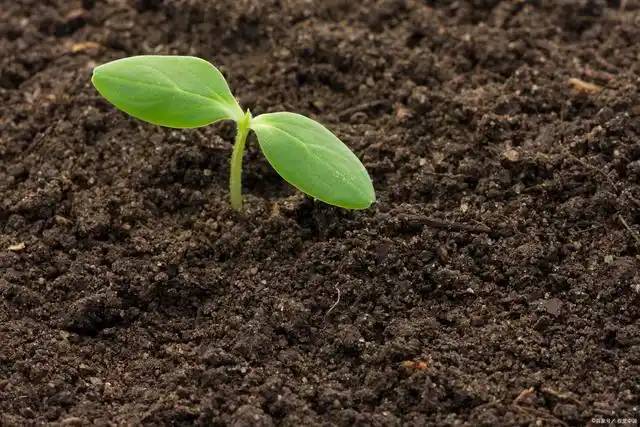
3. 2 Abiotic factors
The harvest time of different varieties of Epimedium varies, and there are significant differences depending on production needs. For example, the laws of leaf biomass accumulation are similar between species. The average leaf weight showed an upward trend before May 31 (Tianping Mountain Epimedium and Hirsutum Epimedium) or June 15 (Sagittatum Epimedium and Peltatum Epimedium), and then remained stable. There are significant differences between species in terms of the accumulation pattern of total flavonoid content.
Epimedium sagittatum, Epimedium pubescens, Epimedium brevicornum and Epimedium pubescens var. tomentaceum have their highest values on March 15, June 30, July 31 and September 30, respectively. From the accumulation patterns of ICA, Epimedium brevicornum Maxim. A, Epimedium brevicornum Maxim. B, and Epimedium brevicornum Maxim. C, it can be seen that the optimal harvest periods for each species are different. The optimal harvest periods for Epimedium brevicornum Maxim. var. hirsutum, Epimedium brevicornum Maxim. var. sagittatum, Epimedium brevicornum Maxim. Tianping Mountain, and Epimedium brevicornum Maxim. var. tomentosum are the end of May, mid-June, the end of August, and mid-September, respectively [30, 5 4-55]. Therefore, the harvest period has a significant impact on the accumulation of both the leaf biomass and the flavonol glycoside content of Epimedium plants. During the production process, the harvest time needs to be determined reasonably based on an integrated analysis of the changing laws of the three levels of leaf biomass, effective component content, and total effective component accumulation.
4 Artificial cultivation techniques
Currently, the main cultivated species of Epimedium are E. wushanense, E. hirsutum, E. sagittatum and E. feltiae. Seedlings are often used to cultivate mature Epimedium plants. The technique is easy to operate and has a high reproduction factor. However, because the seed dormancy period is too long, and the dormancy period of seeds from different types of Epimedium varies, the seed germination rate is low, and there are few seedlings, so sexual reproduction is not widely used in production. seedlings are few, resulting in sexual reproduction not being widely used in production. Epimedium plants reproduce in a similar way to tuber plants. Their underground rhizomes are both nutrient storage organs and clonal reproduction organs.
They can continue to survive after the leaves and branches above ground die to obtain underground resources. Therefore, in artificial cultivation, rhizome transplantation is often used for asexual propagation. The transplanting survival rate is affected by factors such as rhizome length, planting density, and planting depth [56-57]. Studies have shown that the 12 cm rhizome length treatment of Epimedium pubescens grows well, and is the most suitable length for cultivating rhizomes. The row spacing in the cultivation area is 30 cm × 30 cm, the hole depth is appropriate for the roots to stretch straight, and the soil is cultivated until the buds are slightly visible. 8 000 to 10 000 seedlings are used per mu. Under forest cultivation, the effective planting area is usually calculated as about 280 m2 per mu, and the seedling quantity is about 1,200 plants per mu [58]. Rapid propagation of Epimedium plants through tissue culture technology is an emerging technology developed in the early 20th century. At present, it is only concentrated in the laboratory research stage of selecting better explants and preparing the best medium to induce callus. In actual production, the technology is not mature and the cost is high, so large-scale artificial cultivation cannot be achieved [59].
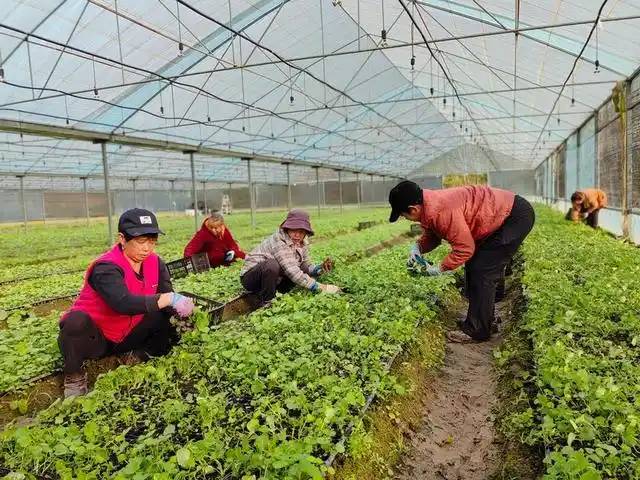
5 Problems and prospects
The characteristics of Epimedium multiflorum, such as polygenus, polygenesis, difficulty in identification, and long seed dormancy period, lead to the fact that the variety, origin, and harvest period of Epimedium multiflorum will affect its quality. The content of ICA in different varieties, different origins, and different harvest periods of Epimedium sagittatum differs significantly, and there are also great differences between individual plants of the same variety, making the samples not representative enough. At the same time, in terms of quality control, the evaluation index component is too single, and the content of ICA in Epimedium sagittatum is unstable, resulting in the quality of many Epimedium sagittatum medicinal materials and decoction pieces on the market being unqualified. In addition, because the Chinese Pharmacopoeia does not yet have a limit standard for heavy metals and harmful elements in Epimedium plants, heavy metals and harmful elements can be detected in the market, and the amount of heavy metals and harmful elements in some samples from certain production areas is high [54, 57, 60]. Research is urgently needed on how to improve the quality and yield of Epimedium plants:
(1) Establish a multi-indicator composition control method for Epimedium plants based on fingerprinting combined with the “one test, multiple evaluation” technique to meet the quality control needs of their complex components. The main structural groups contained in Epimedium plants are comprehensively controlled, and the total polysaccharide index with relatively stable structure is increased. Fingerprint analysis is used to identify the differences between different varieties of Epimedium and screen for varieties that meet market demand. The intrinsic functional and proportional relationships of the main bioactive components of Epimedium plants are used to comprehensively analyze the quality of Epimedium plants by measuring only one component and obtaining the calculation results of simultaneous determination of multiple components. . Through large-sample data analysis, the basic status of the components contained in each original material was obtained, and corresponding quality standards were formulated separately.
(2) Carry out the breeding of local excellent varieties of Epimedium plants and promote the ecological planting process of Epimedium. On the basis of widely collecting the germplasm resources of Epimedium in Guizhou, traditional breeding is combined with modern molecular biotechnology to accelerate the selection of excellent varieties of local Epimedium medicinal materials in Guizhou; key technical problems in all aspects of the breeding of Epimedium seedlings are overcome, such as seed collection, breaking dormancy, seedling raising, etc.; basic research on the standardized cultivation (GAP) technology of Epimedium medicinal materials is increased, and in-depth research is carried out on the general environment, microhabitat, site conditions, evolutionary biology, morphological characteristics, various physiological and biochemical indicators, and chemical composition of Epimedium in Guizhou Epimedium distribution areas of the environment, microhabitat, site conditions, the evolutionary biology of different species, morphological characteristics, various physiological, biochemical indicators, chemical composition, etc., in-depth research, with reference to existing successful cases of ecological planting for forest floor bionic cultivation, agro-forestry complex management.
(3) Combining the karst geographical characteristics, research on the cultivation of Epimedium plants in karst rocky mountainous areas will be carried out. The adaptation mechanism of Epimedium plants and karst rocky habitats will be revealed, the impact of habitats on the quality and main active ingredients of Epimedium plants will be analyzed, and effective control measures will be proposed to provide basic support for related work in the later stage.
References:
[1] Lei R. Research on the evaluation and utilization of 15 germplasm resources of Epimedium. Guiyang: Guizhou University, 2022: 10-16.
[2] Sheng Maoyin . Research on Epimedium Plant Resources [D]. Guiyang: Guizhou Normal University, 2006: 16-22.
[3 ] Wang Yueyun . Taxonomic Identification and Quality Research of Small-flowered Epimedium Species in China [D]. Guiyang: Guiyang College of Traditional Chinese Medicine, 2006: 8-15.
[4] Yang Xiuwei, Yang Xuanhui, Deng Kuaping, et al. Characteristics of wild Epimedium in northern Guizhou and domestication and cultivation techniques [J]. Agricultural Technology Service, 2020, 37(9): 70-71.
[5] Yan Binbin, Cui Xinping, Wan Xiufu, et al. Research progress on flowering and fruiting of medicinal Epimedium and seed dormancy characteristics [J]. Chinese Modern Traditional Chinese Medicine, 2022, 24(2): 376-383.
[6] Ran Beixiong, Wei Desheng, Zou Jianling, et al. Research on wild resources and standardized planting of Epimedium brevicornum Maxim. in Guizhou Province and its protection and cultivation [J]. Chinese Journal of Biotechnology in Medicine, 2002, 28(3): 1-14.
[7] Gong Huaqian, Gao Min, Chai Yihui, et al. Research progress on the chemical composition and pharmacological effects of Epimedium sagittatum. Journal of Hubei University for Nationalities (Medical Sciences), 2021, 38(4): 75-78.
[8] Ma Xiaohui, Liu Li, Sun Shaobo, et al. Research on the status quo and potential distribution of Epimedium resources. Chinese Modern Traditional Chinese Medicine, 2020, 22(7): 1022-1026.
[9] Li Yan, Yu Tao, Miao Mingsan. Analysis of the chemistry, pharmacology and clinical application of Epimedium. Journal of Traditional Chinese Medicine, 2017, 32(4): 619-622.
[10] Han Guoying, Song Peilang, Yu Meiling, et al. Endemic and rare plants of the genus Epimedium (Berberidaceae) in Guizhou Province and their conservation value [J]. Seed, 2013, 32(5): 53-57.
[11] Tu Yulin. Preliminary study of endemic plants in Guizhou (1) [J]. Guizhou Forestry Science and Technology, 1991, 3: 68-81.
[12] He Shunzhi. A new species of Epimedium (Epimedium) medicinal plant in China [J]. Plant Resources and Environment, 1993, 2(4): 51-53.
[13] He Shunzhi, Zhang Tianlun. A new species of Epimedium (Berberidaceae) from Guizhou. Guangxi Botany, 1994, 14(1): 25-26.
[14] He Shunzhi, Guo Baolin. A new species of Epimedium (Berberidaceae) from Guizhou [J]. Yunnan Botanical Research, 1996, 18(2): 209-210.
[15] Ying Junsheng, Chen Dezhao. Flora of China (Vol. 29) [M]. Beijing: Science Press, 2001: 255-326.
[16] He Shunzhi, Xu Wenfen. A new species of Epimedium (English) [J]. Yunnan Botany Research, 2003, 25(3): 281-282.
[17] He Shunzhi, Guo Baolin, Wang Xiaochun. Taxonomic study of Epimedium sagittatum and its related species.
Guizhou Science, 2003, 21(2): 102-106. [18] Chen Qianhai. Flora of Guizhou (Vol. 10). Guiyang: Guizhou Science and Technology Publishing House, 2004: 895-927.
[19] Guo Baolin, He Shunzhi, Zhong Guoyue, et al. Two new species of Epimedium (Berberidaceae) from China [J]. Journal of Plant Taxonomy, 2007, 45(6): 813-821.
[20 ]He S Z ,Wang Y Y ,Guo B L ,et al. Epimedium pudingense (Berberidaceae),a newspeices from Guizhou,China[J]. Annal- es Botanici Fennici,2010,47:226-228 .
[21] Wu Z Y, Raven P H, Hong D Y. Flora of China (Vol. 19) [M]. Beijing: Science Press, St. Louis: Missouri Botanical Garden Press, 2011: 457-522.
[22] Xi Houcheng, Zhu Hong, Yu Ziwen, et al. Investigation of wild plant resources of Epimedium in Guizhou [J]. Guizhou Agricultural Science, 2014, 42(11): 39-41.
[23] Zhang Xiaodong. Taxonomic identification and medicinal quality research of Epimedium grandiflorum group in China [D]. Guiyang: Guiyang College of Traditional Chinese Medicine, 2009: 14-18.
[24] He Shunzhi, Wang Yueyun, Xu Wenfen, et al. Research on the germplasm resources of Epimedium herb in Guizhou [J]. Seed, 2011, 30(5): 69-71.
[25] Shen Baoming, Tan Zhuming, Shen Airong, et al. A literature review of Epimedium sagittatum [J]. Hunan Forestry Science and Technology, 2020, 47(5): 96-109.
[26] Yuan Hang. Identification and quality evaluation of Epimedium sagittatum from Guizhou Province [D]. Beijing: Beijing University of Chinese Medicine, 2014: 12-22.
[27] Liang Hairui, Yan Wenmei, Yang Chunshu, et al. New plants of the genus Epimedium. Journal of Plant Taxonomy, 1990, 28(4): 321-324.
[28] William T S. Four new Chinese species of Epimedium (Berberidaceae) [J]. Kew Bulletin, 1997, 52(1): 659-671.
[29] Shi Kuo-Hao, Zhang Guang-Cai, Wu Kang-Xiong, et al. Comparison of the pharmacological activities of the main components of the flavonoid glycosides of four Epimedium species in vitro [J]. Journal of Shaanxi University of Science and Technology, 2021, 39(2): 56-61.
[30] Li Renqing, Tian Shuyun, Li Fengqin, et al. Dynamic changes in yield and quality of four species of Epimedium and research on the optimal harvest period [J]. Shizhen National Medicine, 2022, 33(6): 1456-1462.
[31] Li Yan, Yu Tao, Miao Mingsan. Analysis of the chemistry, pharmacology and clinical application of Epimedium brevicornum Maxim.
[32] Bai Xiaojun, Ren Jianxun, Zhang Weiping. Effect of Icaris total flavonoids on neovascularization of ischemic myocardium after acute myocardial infarction in rats [J]. Chinese Journal of Experimental Pharmacology, 2021, 27(12): 40-47.
[33] Bai Xiaojun, Liu Yan, Gao Shanshan, et al. Research on the mechanism of icariin inhibiting oxidative stress-induced calcification of aortic vascular smooth muscle cells [J]. Chinese Journal of Traditional Chinese Medicine, 2021, 46(17): 4497-4503.
[34] Meng Xianli, Zeng Nan, Zhang Yi, et al. Study on the effects of effective components of Epimedium on monoamine neurotransmitters in the hypothalamus and other brain functions of aging male rats [J]. Chinese Journal of Traditional Chinese Medicine, 1996, 21(11): 683-685.
[35] Zhang Ling, Wang Yun, Mao Haiting, et al. Research on the inhibition of yin yanghuo glycosides on the activity of telomerase in tumor cells and its regulatory mechanism [J]. Chinese Journal of Immunology, 2002, 18(3): 191-196.
[36] Yuan Hang, Cao Shuping, Chen Shuyun, et al. Research progress on the chemical composition and quality control of Epimedium sagittatum (Yinyanghuo) [J]. Chinese Herbal Medicine, 2014, 45(24): 3630-3640.
[37] Liu Chunming, Liu Zhiqiang, Dou Jianpeng, et al. Isolation, extraction and structural identification of new alkaloids in Korean Epimedium. Journal of Chemical Research in Colleges and Universities, 2003, 12: 2215-2217.
[38] Ding Yue, Xu Xiaoyu, Wang Yafei, et al. Protective effect of epimedium alkaloids on the reproductive system damage caused by cyclophosphamide in male rats [J]. Food Industry Science and Technology, 2021, 42 (21): 353-360.
[39] Zhang X D, Oh M Y, Kim S, et al. Epimediphine, a novel alkaloid from Epimedium koreanum inhibits acetylcholinesterase [J]. Natural Product Reports, 2013, 27(12): 1067-1074.
[40] Zhang N. Research on the structure analysis and antioxidant activity of the neutral polysaccharide in Epimedium koreanum [D]. Changchun: Changchun University of Traditional Chinese Medicine, 2019: 8-12.
[41] Rao Jinhua, Liu Wenying, Jiang Jiayu. Analysis of the composition of monosaccharides in Epimedium polysaccharide by column pre-derivatization high performance liquid chromatography [J]. Shizhen Traditional Chinese Medicine , 2007, 18 (2): 366-367.
[42] Li Long. Research on the immune enhancing effect of astragalus polysaccharide and epimedium polysaccharide [D]. Urumqi: Xinjiang Agricultural University, 2013: 7-10.
[43] Wei Guoyan, Chen Jianjun, Liao Sihong, et al. The effect of light on the biosynthesis of active ingredients in Epimedium sagittatum (J. F. Arnold) Maxim.
[44] Lei R, Wang ZY, Wang YP, et al. Effect of shading degree on the growth and yield of Epimedium brevicornum Maxim.
[45] Luo Yan. Research on the effects of shading on the physiological and ecological characteristics and pharmacodynamic components of Korean epimedium [D]. Changchun: Jilin Agricultural University, 2018: 10-18.
[46] Li Xiaoming, Pan Junqian, Luo Yanjiao, et al. Effect of light quality under different light intensities on the growth and development of Epimedium koreanum and the content of icariin-type flavonoids [J]. Chinese Journal of Traditional Chinese Medicine, 2020, 45(11): 2502-2508.
[47] Dai Ailin, Zhang Yonggang, Ai Qiang, et al. Effect of different light qualities on the growth, physiology and flavonoid accumulation of Korean Epimedium [J]. China Agricultural Science and Technology Report, 2022, 24(4): 85-92.
[48] Xu Chongran, Ge Hui, Jia Xiuwei, et al. Embryonic morphological and physiological and biochemical changes during the stratification of Epimedium seeds at different temperatures [J]. Journal of Grassland Science, 2022, 30(8): 2075-2081.
[49] Chen Yan, Jia Xiaobin, Cai Yin, et al. Temperature and heating time: two key factors affecting the content of icariin [J]. Chinese Patent Medicine, 2007, 7: 1038-1041.
[50] Li Renqing. Study on the changes in the quality of four cultivated species of Epimedium and the dynamic accumulation of the polysaccharide components of Epimedium [D]. Nanchang: Jiangxi University of Traditional Chinese Medicine, 2021: 8-14.
[51] Dong Bo, Wang Kepeng, Guo Tianwen, et al. Correlation analysis of the content of effective components in Epimedium sagittatum from different origins in Gansu Province and soil nutrients [J]. Shizhen National Medicine, 2015, 26 (8): 2027-2029.
[52] Meng Fangfang, Zhang Qiang, Jiang Dacheng, et al. Correlation analysis of soil chemical indicators of different growing areas of Korean horny goatweed [J]. Special Product Research, 2021, 43(3): 83-88.
[53] Qian Yifan, Li Yunxiang, Chen Lanying, et al. Effect of fertilization on the yield of Epimedium wushanense and Epimedium pubescens. Journal of Xihua Normal University (Natural Science Edition), 2014, 35(1): 57-62.
[54] Deng Aiping, Fang Wentao, Zhou Qingguang, et al. Analysis of quality influencing factors and quality control measures for Epimedium brevicornum Maxim.
[55] Wu Chunmei, Li Yunxiang, Quan Qiumei, et al. Relationship between the maturity of Epimedium fruit and its habitat. Journal of Applied and Environmental Biology, 2008, 2: 187-191.
[56] Ji Yufang, Song Songquan, Tian Xiangrong, et al. Research on the dormancy type and germination of the seeds of Epimedium sagittatum. Guangxi Botany, 2022, 42(11): 1939-1948.
[57] Cui Xinping, Yan Binbin, Wan Xiufu, et al. Current status and prospects of research on the cultivation of medicinal Epimedium sagittatum. Chinese Modern Traditional Chinese Medicine, 2022, 24(4): 705-714.
[58] Du Zhenhui. Research on key technologies in the cultivation of Epimedium sagittatum [D]. Zhengzhou: Henan University of Traditional Chinese Medicine, 2017: 41-47.
[59] Han Wei. Tissue culture of Epimedium sagittatum seedling and callus and adventitious root [D]. Luoyang: Henan University of Science and Technology, 2020: 35-42.
[60] Tong Hong, Jiang Weike, Zhou Tao, et al. The utilization status and problems of the Crassula helmsii resources in Guizhou Province [J]. Guizhou Agricultural Science, 2013, 41(2): 23-25.


 English
English French
French Spanish
Spanish Russian
Russian Korean
Korean Japanese
Japanese
